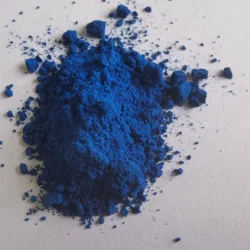Exploring the World of Paint Pigments: Understanding Their Types and Uses
2024-08-24
Paint pigments are the essence of color in paints, dyes, and coatings. They play a critical role in determining the final hue, opacity, and overall quality of the finished product. Understanding the types of paint pigments and their uses can help you make informed choices, whether you're a professional painter, artist, or DIY enthusiast. Here’s an overview of the different types of paint pigments and how they impact your projects.
1. What Are Paint Pigments?
Paint pigments are finely ground substances that provide color to paint. They can be organic or inorganic, and their primary function is to impart color and opacity to paint formulations. Pigments differ from dyes in that they are insoluble in the medium they are mixed with, whereas dyes dissolve.
2. Types of Paint Pigments
Pigments come in a wide range of types, each with unique properties and applications. Here are the main categories:
Organic Pigments: Organic pigments are derived from natural sources or synthesized from organic compounds. They are known for their vibrant and intense colors. Common examples include:
Azo Pigments: These are bright and transparent, often used in red, yellow, and orange hues.
Phthalocyanine Pigments: These provide strong, durable blues and greens and are valued for their lightfastness and stability.
Quinacridone Pigments: These pigments offer brilliant reds and purples and are known for their excellent lightfastness.
Inorganic Pigments: Inorganic pigments are derived from mineral sources or synthetically produced through chemical reactions. They are often used for their opacity and durability. Examples include:
Titanium Dioxide: Known for its excellent opacity and brightness, it is widely used as a white pigment.
Iron Oxides: These pigments provide a range of earth tones, including reds, browns, and yellows, and are prized for their durability.
Ultramarine Blue: Derived from lapis lazuli or synthetically produced, this pigment offers a deep blue color and is used in various applications.
3. Choosing the Right Pigment for Your Project
Selecting the right pigment depends on various factors, including the type of paint, desired color, and application. Here are some tips for choosing pigments:
Color and Lightfastness: Consider the desired color and the pigment’s lightfastness. Lightfastness refers to how well a pigment resists fading when exposed to light. Organic pigments, while vibrant, may sometimes have lower lightfastness compared to inorganic pigments.
Opacity vs. Transparency: Determine whether you need an opaque or transparent pigment. Opaque pigments provide solid coverage, while transparent pigments allow underlying layers or surfaces to show through.
Durability and Stability: Evaluate the pigment’s durability and stability, especially for outdoor or high-traffic applications. Inorganic pigments are often more durable and stable than organic pigments.
4. Applications of Paint Pigments
Paint pigments are used in various applications, from fine arts to industrial coatings. Here are some common uses:
Fine Arts: Artists use pigments in paints for their vibrant colors and textures. Pigments can be mixed with binders to create oil, acrylic, or watercolor paints.
Interior and Exterior Paints: Pigments are essential in producing paints for walls, ceilings, and trim. They provide color and opacity, influencing the overall appearance of the space.
Automotive Coatings: Automotive paints use pigments to achieve high-quality finishes and ensure long-lasting protection against the elements.
Cosmetics: Certain pigments are used in cosmetics to provide color and enhance product appeal. They must be safe and approved for use on the skin.
5. The Future of Paint Pigments
The field of paint pigments is continually evolving, with ongoing research into new materials and technologies. Future developments may include:
Sustainable Pigments: Advances in sustainable and eco-friendly pigments are aimed at reducing environmental impact while maintaining high performance.
Nanotechnology: Nanopigments are being developed to provide enhanced color properties and better performance in various applications.
In conclusion, understanding paint pigments is essential for achieving the desired results in any painting project. By knowing the types of pigments available and their applications, you can make informed decisions and select the best options for your needs. Whether you’re an artist, decorator, or manufacturer, a thorough understanding of paint pigments will help you achieve vibrant, durable, and high-quality colors.



